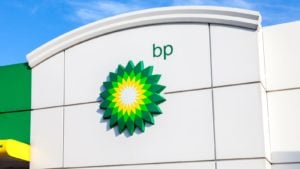With OPEC+ agreeing to terms on a production cut, does that make BP plc (NYSE:BP) a buy? Shares have been hammered, as have most energy names, with BP stock still down 38.6% from its 2020 highs.
From peak to trough, BP fell more than 60%. Investors were dumping everything in the sector as oil prices got obliterated. It doesn’t matter what company it was, either. Exxon Mobil (NYSE:XOM), Chesapeake Energy (NYSE:CHK), BP — they have all felt the pressure.
The question now is, are any of them a buy?
Coronavirus and Price Wars
Oil prices are a balance between supply and demand. If rising demand isn’t met with rising supply, oil prices go up. If rising supply isn’t met by rising demand, oil prices go down. The vice versa is true in both scenarios as well.
Coming into 2020, oil prices were stable near $60 per barrel. So why did oil prices plunge to roughly $20? It was an unfortunate combination of supply and demand.
Demand was and still remains under pressure due to the novel coronavirus. With the global economy grinding to a halt, demand for oil has been incredibly weak. With less buyers, oil prices have suffered. However, a volatile price war between Russia and Saudi Arabia was salt in the wound, as they flooded the market with supply.
When dwindling demand was combined with intentional spikes in supply, prices really plunged. The latest OPEC+ deal to cut production by almost 10 million barrels per day should help stabilize prices. However, an increase in demand will eventually be necessary to drive oil prices higher.
Is BP Stock a No-Touch Until Then?
Investors who want to buy BP stock shouldn’t wait until oil demand has rebounded and markets are stabilized. By then, the price of BP will have already undergone a tremendous rally, leaving investors out in the cold.
That doesn’t mean that right now is necessarily the time to buy, either.
Prospective investors need to realize that the oil market and the equity market still have potential risk. With so much risk present in the energy sector, investors have to go with the highest-quality stocks. That means avoiding stocks like Chesapeake and opting for companies like BP plc, Exxon and other majors that have staying power; companies that can outlast the turmoil in the oil market and make it to better days.
BP is not a lay-up trade, but down almost 40% from its highs has certainly adjusted the risk/reward. On Feb. 4, BP raised its dividend by 2.4%. After the stock rout, shares now yield 10.3%. If the dividend isn’t cut, that’s one heck of a yield for investors to collect.
As for its balance sheet, the company has more than $22.4 billion in total cash on hand. That’s enough to cover current debt of $10.4 billion. Current assets weigh in at $82 billion vs. just $73.5 billion in current liabilities. In other words, the company can cover its short-term obligations, which is a much better situation than many other oil and gas entities.
That said, the company does carry more than $57 billion in long-term debt. BP stock doesn’t have an unstressed balance sheet, which always presents a risk for buyers.
Trading BP Stock
On the five-year weekly chart above, you can see the plunge in BP stock. Shares traded all the way down to $16 once it lost several key points of support. The move was fast and dire.
At the start the breakdown, shares broke below $34, which was multi-year range support. In that same move, shares also broke below the 200-week moving average and for two consecutive weeks, failed to close above the $32 breakout level.
After rallying off the lows, BP stock is now trying to fill into the gap up toward $31 (blue box). Thus far, it’s having trouble pushing higher. If it can fill the gap up to that level, I would expect $32 to again act as resistance. If it doesn’t, $34 is possible.
On the downside, it would be encouraging to see BP stock hold $22 as support. This was a noteworthy level from 2015 and 2016. Below puts sub-$20 in play. At this point, BP and other energy plays may feel like a high-risk, high-reward endeavor. For investors that feel that way, or feel that BP is took risky, they may simply choose to ignore the stock and search for safer investment candidates.
Bret Kenwell is the manager and author of Future Blue Chips and is on Twitter @BretKenwell. As of this writing, Bret Kenwell did not hold a position in any of the aforementioned securities.

